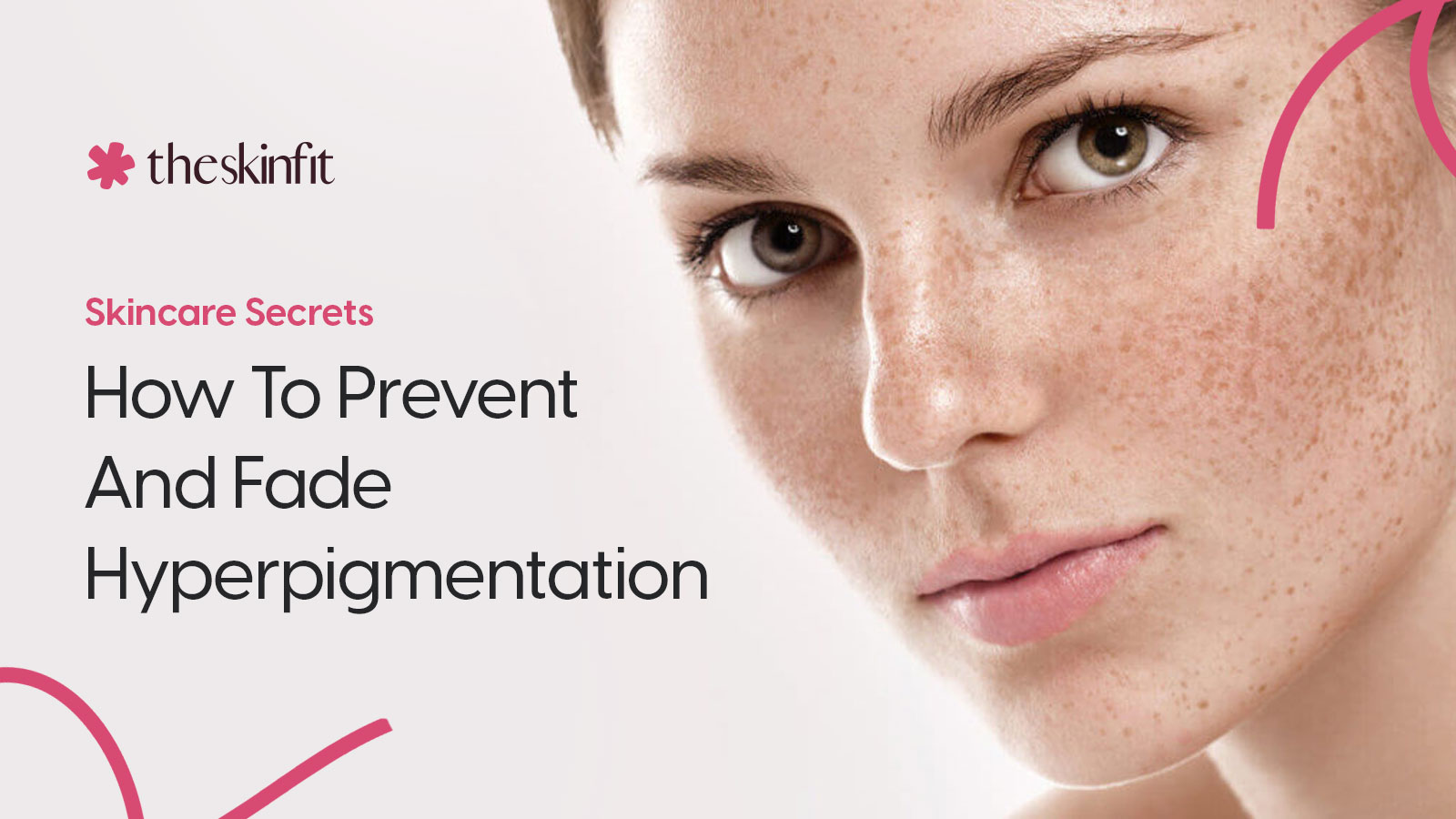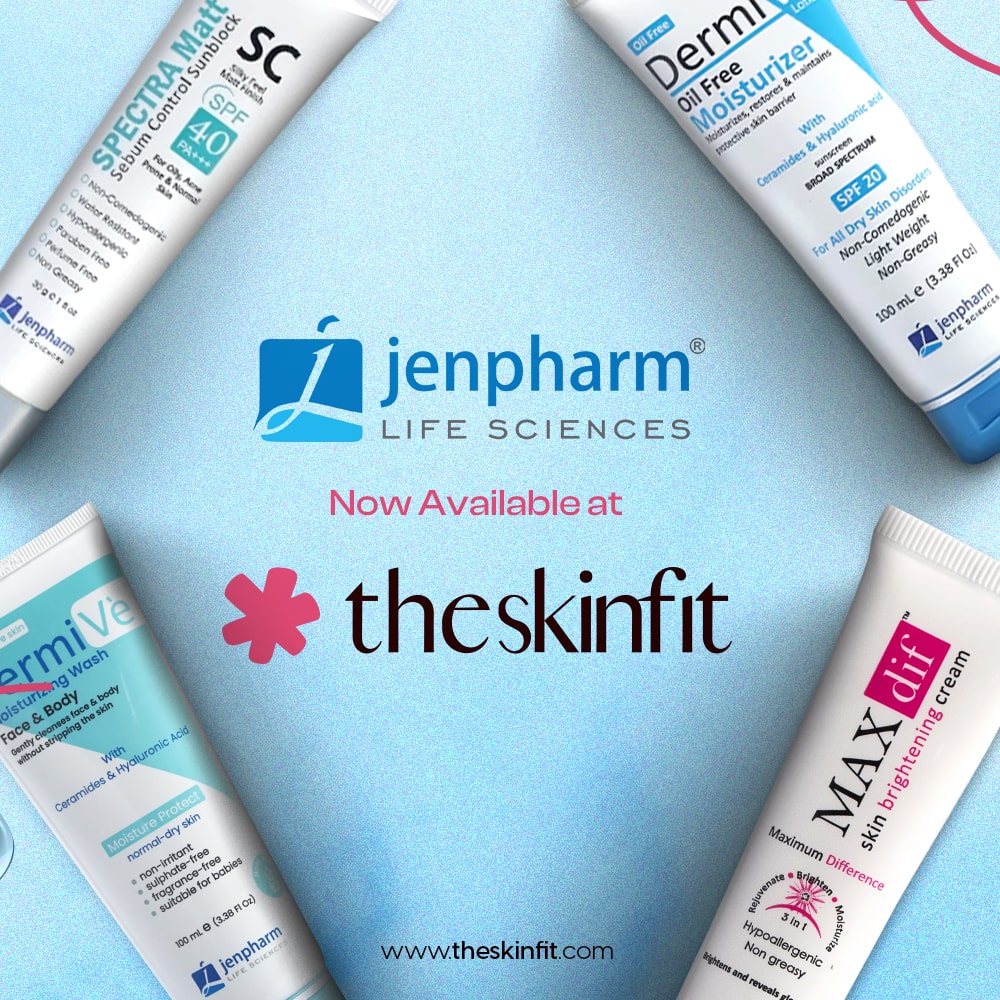Hyperpigmentation is the darkening of some areas of the skin due to an excess of melanin, the pigment that determines our skin color. It may affect individuals with all skin types and arise due to sun exposure, hormone changes, acne, or skin trauma.
Hyperpigmentation is more than just a physical concern; it can also affect your mental well-being. That's why we'll go into the emotional components, addressing any confidence problems that may develop and providing encouragement and support along the way. Our objective is to provide a welcoming environment where you may feel inspired and motivated as you embark on your skincare journey.
We aim to present you with a thorough resource that looks under the surface and into the science of hyperpigmentation. Don't worry; we won't bombard you with technical jargon.
So be ready to start on this amazing journey into hyperpigmentation. We'll negotiate the complexities, clarify falsehoods, and provide you with the information and skills you need to enjoy your natural beauty. Let's start and learn how to get a more even and beautiful complexion you can proudly call your own.
What are the main causes of Hyperpigmentation?
Hyperpigmentation has several potential root causes. Some prevalent factors are:
- Sun exposure: Too much contact with the sun's dangerous ultraviolet (UV) rays can cause the skin to make more melanin, which causes dark spots or patches.
- Hormonal Changes: When hormone levels change, like when a woman is pregnant or taking certain medicines, melanin production can be sped up, leading to hyperpigmentation.
- Inflammation and Skin Trauma: Skin injuries, acne, or inflammation may induce post-inflammatory hyperpigmentation (PIH), in which the damaged region becomes darker than the surrounding skin.
- Genetic Factors: Some people are inclined genetically to hyperpigmentation, making them more sensitive to the disorder.
Types of Hyperpigmentation
Hyperpigmentation may manifest itself in a variety of ways. Understanding these variances may aid in selecting the best treatment strategy. Among the most common is:
Melasma
Melasma, often known as a "pregnancy mask," usually affects pregnant women or those using hormonal contraception. It shows dark or gray azelaic acid, especially on the cheekbones, forehead, or upper lip.
PIH (Post-Inflammatory Hyperpigmentation)
Skin damage from burns, cuts, or acne is the root cause of PIH. After the initial skin damage has healed, it is identifiable by the appearance of black spots or patches.
Sunspots
Sunspots, also called solar lentigines or liver spots, are dark spots resulting from excessive sun exposure. They are most prevalent in places regularly exposed to sunlight, such as the face, hands, and shoulders.
Age Spots
Age spots, also called liver spots or solar lentigines, are flat, tanned, or brown skin areas resulting from aging and ongoing sun exposure. They are usually seen on sun-exposed regions such as the face, hands, and arms.
How to Identify Hyperpigmentation
It is best to check with a dermatologist or a healthcare expert to detect hyperpigmentation precisely. They will inspect the afflicted region and may use a Wood's light or a skin biopsy to evaluate the underlying cause and kind of hyperpigmentation.
To understand and treat this common skin issue, you must know what hyperpigmentation is. Here are some crucial measures for recognizing and identifying hyperpigmentation:
- Look for Discolored Patches: Look for regions of your skin that are darker than the rest. Patches, scars, or regions of enhanced pigmentation are common manifestations of hyperpigmentation. These patches may vary in size, shape, and color intensity.
- Examine Commonly Affected Areas: Although hyperpigmentation may develop everywhere in the body, particular places are more prone to it. Pay special attention to the face, neck, hands, arms, and legs, which are regularly exposed to the sun and are more prone to hyperpigmentation.
- Consider Potential Triggers: Consider any potential triggers that may have led to hyperpigmentation's development. Sun exposure, hormone changes (such as during pregnancy or menopause), skin injuries or inflammation, certain drugs, and hereditary factors are common causes.
- Determine the Type of Hyperpigmentation: Different forms of hyperpigmentation have unique features. Melasma, for example, often manifests itself as symmetrical spots on the face, most notably on the cheeks, forehead, and upper lip. Post-inflammatory hyperpigmentation (PIH) manifests as dark spots or patches in the afflicted region after an injury or inflammation, such as acne or a wound.
- Skin Texture Changes: Hyperpigmented patches may have a different texture than the surrounding skin. They might have a rough, uneven, or slightly elevated feel. This textural change may aid in distinguishing hyperpigmentation from typical fluctuations in skin tone.
- Consider a professional evaluation: If you're unsure about the nature of the pigmentation or if it's giving you worry, you should see a dermatologist or a healthcare professional. They can effectively diagnose the problem, determine the underlying cause, and recommend appropriate treatment alternatives.
Hyperpigmentation Treatments
Using a variety of treatments that trained professionals can lessen the appearance of hyperpigmentation. These are some examples:
1- Topical Creams and Serums
To lighten hyperpigmented spots and balance out skin tone, topical creams and serums containing chemicals like hydroquinone, retinoids, kojic acid, or azelaic acid are widely suggested.
Here are some topical creams and serums that are often used to treat hyperpigmentation:
- Hydroquinone: Hydroquinone is a common skin-lightening agent that suppresses melanin formation. It is available both over-the-counter and by prescription in larger doses.
- Retinoids: Retinoids, such as tretinoin or retinol, are vitamin A derivatives recognized for their skin-renewing qualities. They may aid in treating hyperpigmentation by enhancing cell turnover and encouraging the creation of new, uniformly colored skin cells.
- Kojic Acid: Kojic acid is a skin-lightening substance obtained from some fungus. It suppresses melanin synthesis and may be found in various lotions, serums, and soaps.
- Azelaic Acid: Azelaic acid contains exfoliating and skin-lightening effects. It aids in fading hyperpigmentation and may also be used to treat other skin issues, such as acne and rosacea.
- Vitamin C: Ascorbic acid, often known as vitamin C, is a potent antioxidant that may help lighten the complexion and remove hyperpigmentation. It works by reducing melanin production while increasing collagen synthesis.
- Licorice Extract: Licorice extract includes glabridin, a chemical with skin-brightening qualities. It may assist in minimizing hyperpigmentation and leveling out skin tone.
- Niacinamide: Niacinamide, often known as vitamin B3, is a versatile substance with several skin advantages. It may aid in the fading of hyperpigmentation, the management of sebum production, and the improvement of skin texture.
- Alpha Arbutin: Alpha arbutin, produced from the bearberry plant, is a natural skin lightener. It is well-known for reducing melanin formation, resulting in a more equal skin tone.
2- Chemical Peels
Chemical peels entail applying a chemical solution to the top layer of the skin to exfoliate it, exposing a brighter and more even complexion. They are instrumental in the treatment of melasma and PIH.
3- Laser Treatment
Using concentrated laser radiation, laser treatment targets and breaks down extra melanin in the skin. This treatment method can potentially reduce the appearance of hyperpigmentation while promoting collagen formation.
Natural Treatments for Hyperpigmentation
Several natural solutions, in addition to professional treatments, may help control hyperpigmentation. These solutions are often gentler and may be used as part of a normal skincare regimen. Natural therapies that are often used include:
Lemon Juice
Lemon juice includes natural bleaching capabilities that may aid in removing black stains. Lemon juice should be diluted before application to the skin, and sun exposure should be avoided thereafter since it might enhance sensitivity to UV radiation.
Aloe Vera Gel
The calming and healing effects of aloe vera gel are well-recognized. Applying fresh aloe vera gel to hyperpigmented regions may aid in the reduction of irritation and the promotion of skin regeneration.
Turmeric
Turmeric includes curcumin, a substance with anti-inflammatory and antioxidant effects. Applying a turmeric paste to the skin might help reduce dark spots over time.
Green Tea
Green tea contains antioxidants, which help preserve the skin and produce an even complexion. Cooled green tea bags or using green tea-infused skincare products may be helpful.
Changes in lifestyle and prevention
Certain lifestyle adjustments may help with hyperpigmentation management and prevention. Here are some pointers:
- Sun Protection
Applying a broad-spectrum sunscreen with a high SPF regularly may help protect the skin from UV rays, reducing the aggravation of existing hyperpigmentation and producing new dark spots.
- Proper Nutrition and Hydration
A healthy diet of fruits, vegetables, and antioxidants may help with general skin health. Furthermore, keeping hydrated aids in the preservation of skin hydration and suppleness.
- Stress Reduction
Stress may aggravate many skin disorders, including hyperpigmentation. Stress-relieving activities such as meditation, yoga, and hobby pursuits may all improve skin health.
Hyperpigmentation Skincare Suggestions
Having an effective skincare routine in place can be very helpful in controlling hyperpigmentation. Consider the following suggestions:
Gentle Cleansing
Using a gentle, non-abrasive cleanser aids in removing pollutants without irritating the skin. Harsh cleansers may deplete the skin's natural oils, causing dryness and the possibility for hyperpigmentation to worsen.
Exfoliation
Exfoliation regularly can help eliminate dead skin cells and increase cell turnover, resulting in a brighter complexion. To prevent skin sensitivity, it is essential to use light exfoliants.
Moisturizing
Keeping the skin hydrated aids in the maintenance of its barrier function and avoids excessive dryness. For extra moisture, look for moisturizers that include compounds like hyaluronic acid or ceramides.
Vitamin C
Vitamin C is a powerful antioxidant that may help lighten and erase hyperpigmentation. Including a Vitamin C serum or cream in your skincare regimen might be useful.
Hyperpigmentation Makeup Tips
Concealing hyperpigmentation and obtaining a more even skin tone could be greatly helped by using makeup. Consider the following makeup recommendations:
- Color Correcting: Before applying foundation or concealer, use color correctors such as peach or green to help neutralize the appearance of dark spots.
- Lightweight Foundation: Choose lightweight foundations or tinted moisturizers that give coverage without feeling heavy on the skin.
- Concealer Application: Apply a concealer that matches or is slightly lighter than your skin tone to the hyperpigmented areas and blend softly for a seamless finish.
Final thought
To sum up, if you want more even and glowing skin, you need to find out about hyperpigmentation and take steps to treat it. If you know what to look for, what could be causing your hyperpigmentation, and where to get expert advice, you can take charge of your skin's health and make positive changes.
Exposure to the sun, hormonal shifts, skin traumas, and genetics have all been discussed as potential causes of hyperpigmentation. We have explored the numerous forms of hyperpigmentation, such as melasma and post-inflammatory hyperpigmentation (PIH), each with its symptoms and causes.
Hyperpigmentation may be lightened and an even skin tone restored using a variety of methods, both medical (such as lotions, serums, chemical peels, and laser therapy) and natural (such as lemon juice, aloe vera, turmeric, and green tea). We have also emphasized the role that a change in lifestyle, including the use of sun protection, a balanced diet, and the management of stress, may have in preventing and treating hyperpigmentation.
Gentle cleaning, exfoliation, moisturization, and using vitamin C are just a few of the skincare recommendations that may help you achieve a radiant complexion. We've also included makeup ideas for hiding hyperpigmentation to help you feel comfortable and confident in your skin.
As we all know, hyperpigmentation is more than just a cosmetic issue. It may affect your mental health and sense of self-worth. That's why we emphasize appreciating one's unique skin tone and maintaining an optimistic outlook throughout your skincare routine.
Remember that hyperpigmentation is a frequent problem that may be solved with education, resources, and encouragement. A dermatologist or other qualified medical practitioner should be consulted for a proper diagnosis and tailored treatment plan.
You are now more equipped to take charge of your skincare routine by studying hyperpigmentation and its causes, treatments, recommendations, and home cures. Embrace your charm, take care of yourself, and bask in the glow of your healthy skin.
So, what are you waiting for? Explore TheSkinFit Pakistan's leading online cosmetics and beauty store.


